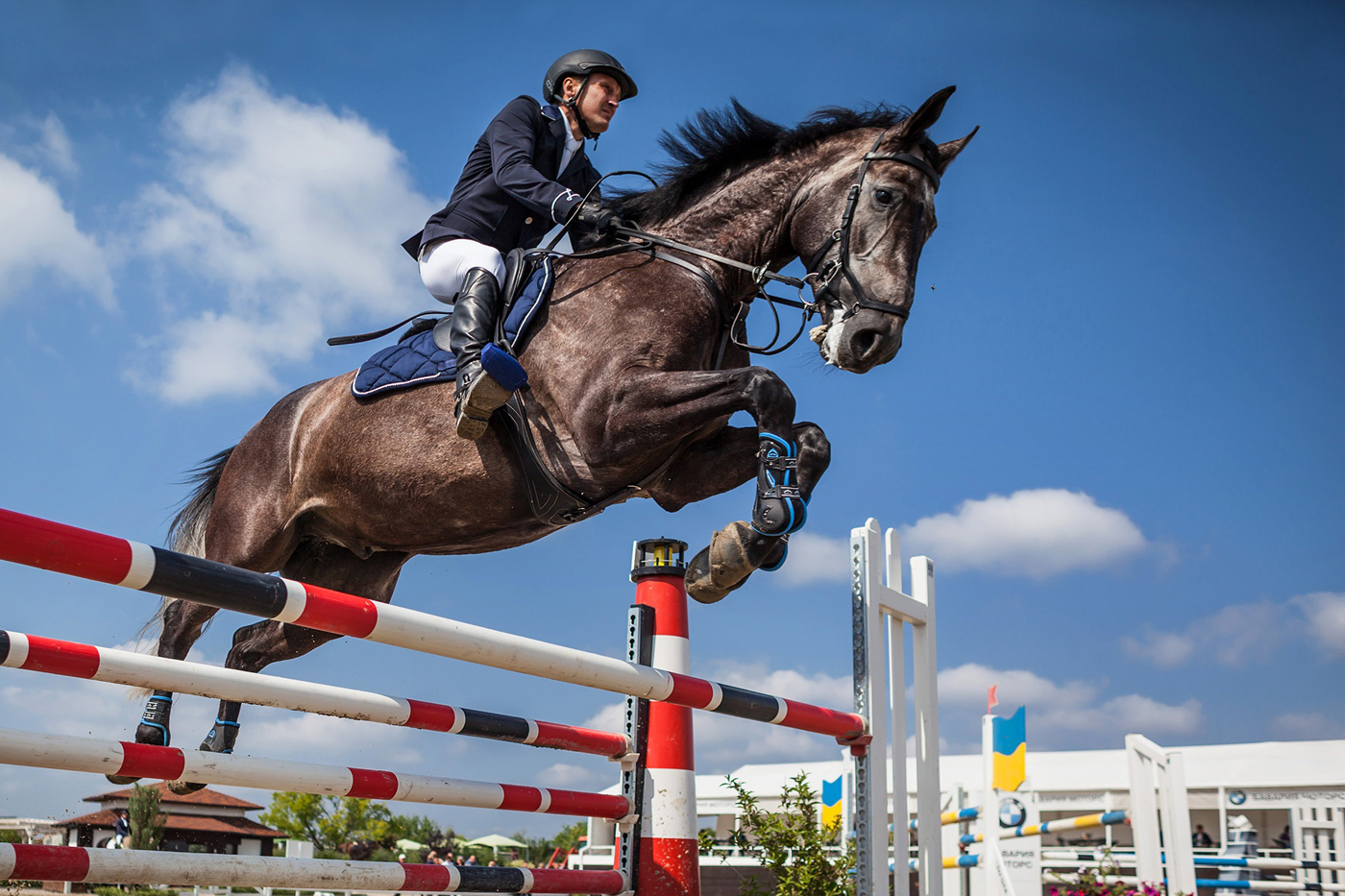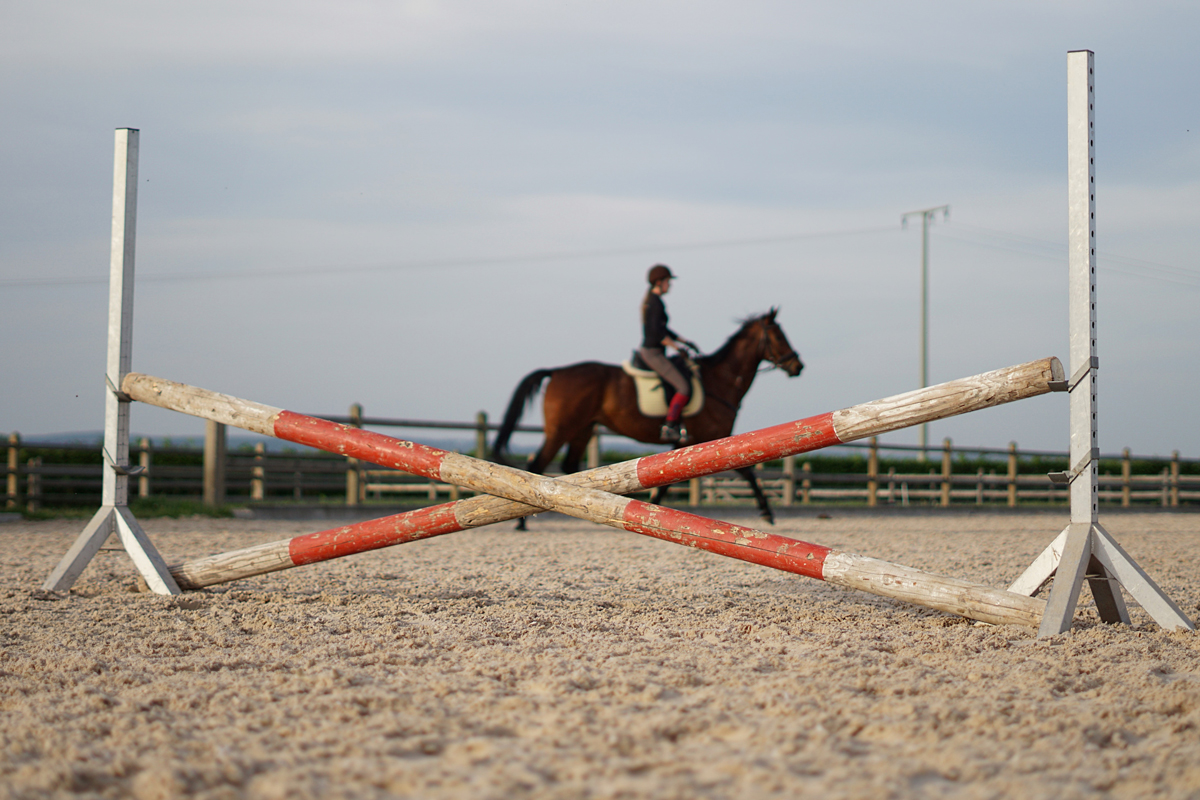There are few things more rewarding for both horse and rider than clearing a jump. However, perfect jumping isn’t something either species does naturally, so a certain amount of training is called for in order to get it right.
Just as it’s vital to have the right insurance for a horse rider, you need to put the right training in place for stress-free success over jumps with your equine companion.
Whether your horse is new to jumping or you’re looking to tweak the style of an already established show jumper, our top tips for improving your horses jumping technique are sure to be useful.
-
Take your time
Jumping well takes confidence, but this confidence can be easily shaken if you take things too fast and ask too much of yourself and your horse.
Progressively building your skills over time will let your technique develop naturally and build that vital trust bond between horse and rider.
This is particularly the case in young horses that may not have jumped before. They will naturally feel apprehensive and won’t perform at their best if they’re not made to feel secure.
If you plan to jump competitively then it’s important to gradually get your horse used to the fillers, boards and water trays they will no doubt encounter on a typical course. Use the training arena as an opportunity to introduce them to these things so they’re not spooked when they meet them later on.

-
Master your flatwork
The route to a successful jump begins on the flat. So make sure the horse is obedient and balanced in their flatwork before progressing to any jumps. For example, an unbalanced canter will mean it’s harder to hit the jump on the right stride and won’t produce the clean jump you’re looking for.
Riding transitions, changes of rein and shapes in walk, trot and canter will all help them become more responsive to your aids and more likely to jump well.
Horses are powerful creatures and you’ll often be moving at great speed in practice. But accidents can happen at any time. Having horse rider insurance in place before you saddle up means you’re always prepared if you have a tumble.
-
Use trot poles to build confidence
Improving your horse jumping technique doesn’t have to involve any jumping at all!
Basic trotting poles are a great place to start working on rhythm and balance because they help to get you both thinking about the horse’s stride before moving onto fences.
Trot poles are usually jump rails made of wood or PVC. They lie on the floor and aren’t attached to anything, so they easily roll if they’re bumped or stepped on.
Begin with two trot poles before adding more to the grid. You want the grid long enough to be challenging but not so long as to endanger balance.
Pay careful attention to the spacing of the poles as this will vary depending on the stride of the horse and what you’re practising. Clearly a small pony ridden at a trot will need a shorter distance between poles than a large striding horse at canter.
Don’t progress until your horse feels relaxed and don’t worry if it takes a few sessions until they’re happy enough in trot for you to canter. An instructor or trainer will be able to give you more guidance on the correct spacing of poles.
-
Invite improved jumping with cross-poles
After the trot poles it might be good to add in a few bounces over cross-poles.
The shape of cross-poles means you are both guided to the centre of the fence and they’re a welcoming invitation to a jump. From here it’s easy to begin to build up your gridwork gradually, building on the great habits you’ve developed together.
However, only attempt gridwork with an experienced helper who can reset poles and fences and change distances as necessary. Often it’s easier for someone on the ground to recognise when a stride doesn’t suit your horse and the grid needs to be adjusted.

-
Work on your position
You won’t be surprised to hear that improving your horses jumping technique also involves a lot of training for you too!
A rider’s position and weight distribution are very important when jumping, particularly if your equine partner is more sensitive.
A balanced position and soft hands at all times will not only lead to improvements in technique but will also be a more pleasant jumping experience for your horse. Input from an experienced trainer is invaluable for getting your position right.
-
Break down your technique
Sometimes getting the right jumping technique can feel a bit overwhelming. So, breaking it down into three distinct sections could help focus your attention.
- Approach – A straight line to the fence with plenty of power will help achieve a clean, rounded jump. Looking up and over the fence rather than down at it will help you both.
- Jump – Keep a balanced position and use your heels and lower legs to keep yourself anchored in the saddle – think of them as your seatbelt. Eyes should be focused ahead to where you want the horse to go.
- Landing – Keep your shoulders back to stop yourself falling forward on landing and your eyes on the next fence!
Protect yourself with horse rider insurance
Whether just for fun or training for a show, jumping with your horse is a great activity but it’s not without risk. Whatever your level of experience, a policy arranged through Equesure will protect you from the financial fallout of a riding mishap.
From placid ponies to former racers, with over 60 years of experience in the insurance market, our specialist team can offer you a bespoke policy tailored to any requirements.
We can offer personal accident cover up to £20,000, saddlery and tack cover up to £2,500 (single article limit of £1,000) and death of horse cover up to £3,250.
Policies from our trusted panel of insurers can also cover personal dental treatment up to £1,750 and public liability up to £1 million.
Get a quote for horse rider insurance today.
Policy benefits, features and discounts offered may very between insurance schemes or cover selected and are subject to underwriting criteria. Information contained within this article is accurate at the time of publishing but may be subject to change.





